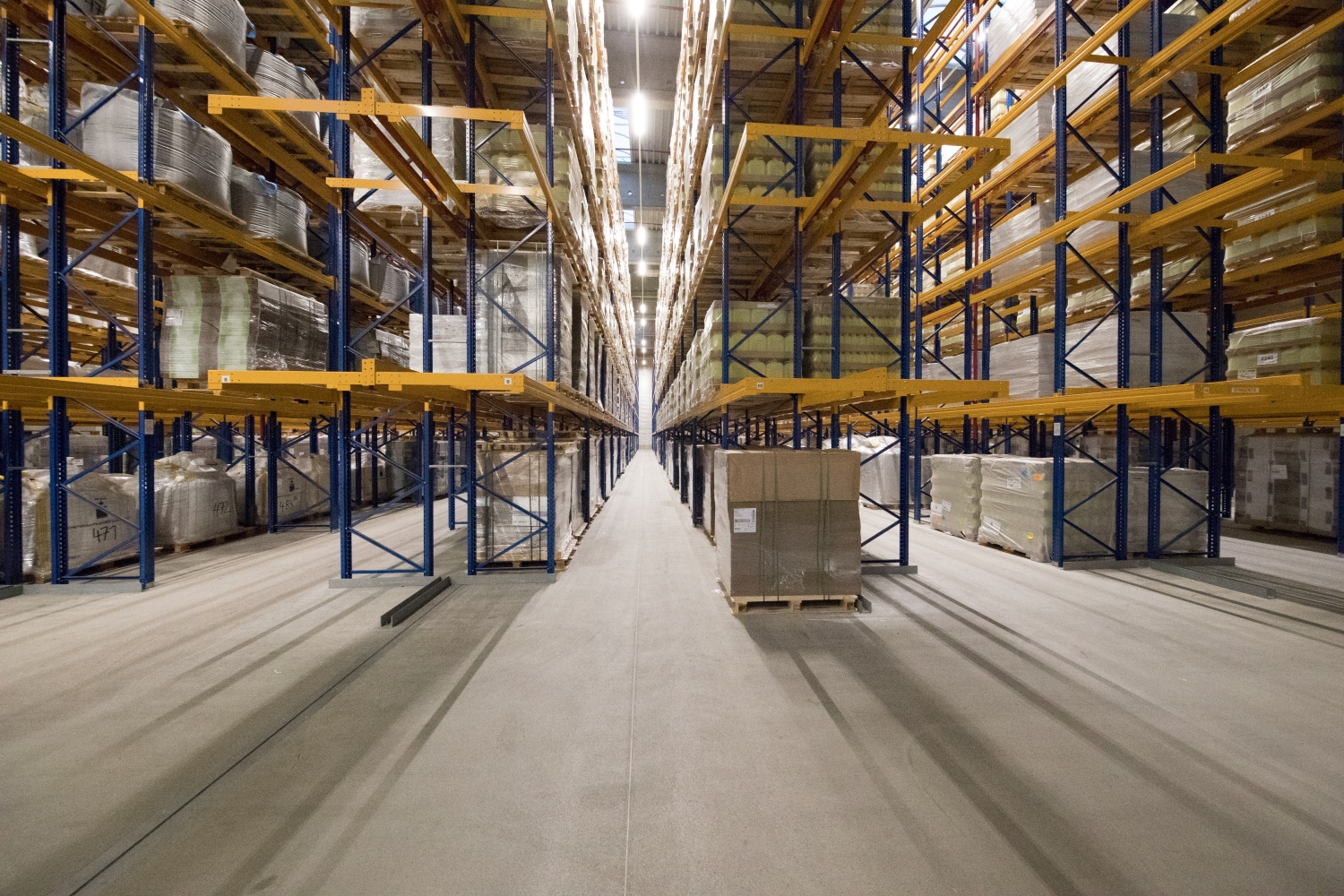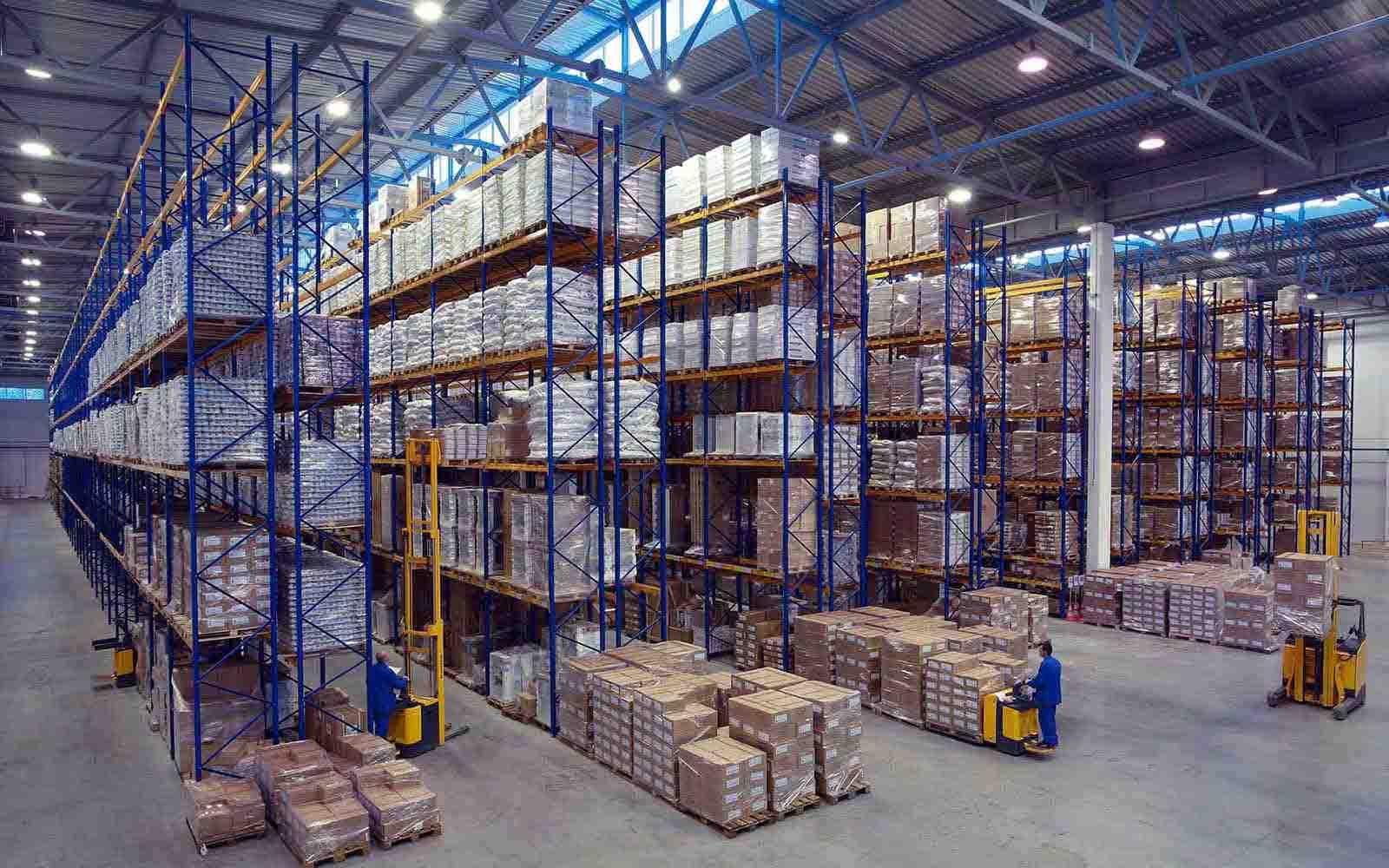
Index
ToggleSelective racks are traditional pallet racks, most commonly used in warehouses. The advantages are easy installation, easy adjustment, and flexibility in storing goods of different sizes. Forklifts can access each individual pallet position, helping to quickly import and export goods.
However, the disadvantage is that it does not make full use of the warehouse area, more suitable for medium or large warehouses.
Drive-in racks are designed for forklifts to go straight into the rack and take goods from inside. This solution saves up to 60–70% of floor space.
This type of shelf is very suitable for homogeneous goods, long-term storage, such as frozen foods, raw materials for production. The limitation is that the import and export of goods follows the LIFO (Last In, First Out) principle, so it is not suitable if the business needs to manage inventory according to FIFO.
This is a variation of Selective racking but stacked in 2 deeper layers of Pallets, increasing the capacity to about 30–40%.
Strengths: increased storage capacity while maintaining flexibility. Weaknesses: require a specialized forklift with a long reach, higher investment cost than Selective racking.
Pallet Flow racks operate on the FIFO principle: first in first out. On the racks there is a roller system, the pallets will slide down by gravity.
This type of shelf is suitable for warehouses with high turnover rate such as food and pharmaceutical industries. The disadvantage is the high initial investment cost, space requirement and regular maintenance.
Mobile shelves are the most modern solution, the shelves are placed on a rail system and can be moved to open aisles. The biggest advantage is maximum space saving, increasing capacity up to 80% compared to fixed shelves.
This type of shelf is suitable for warehouses with high value goods, needing maximum space optimization. The weakness is high investment cost and complex technical system requirements.
Each type of shelf has its own advantages and disadvantages. Businesses need to consider the characteristics of goods, warehouse area, investment costs and operating requirements to choose the most suitable type of shelf.

Installing warehouse shelves seems simple but if done wrong, it can cause many risks. Below are 3 common mistakes and

Technology is changing the way businesses manage their warehouses. Smart warehouse shelves are an inevitable solution in the industrial era.
